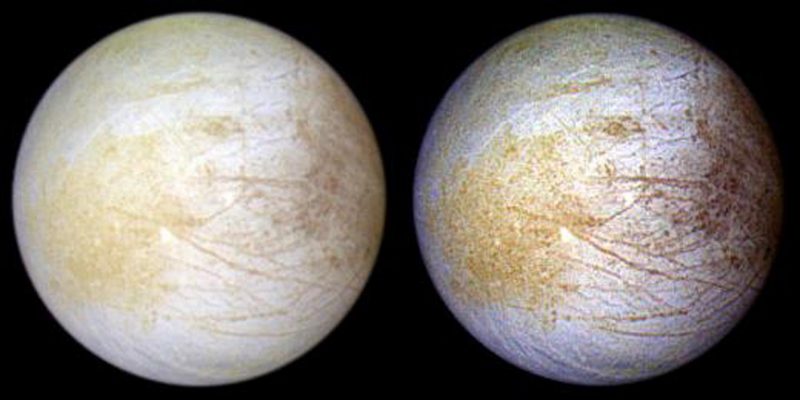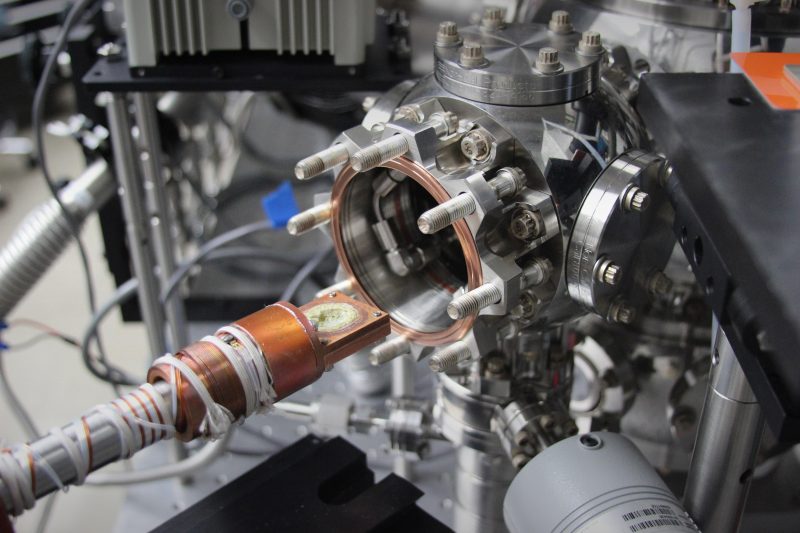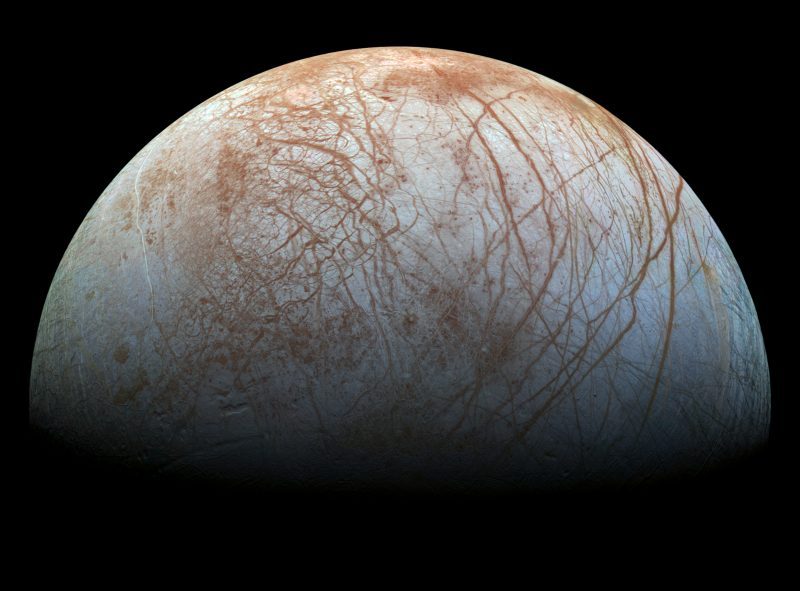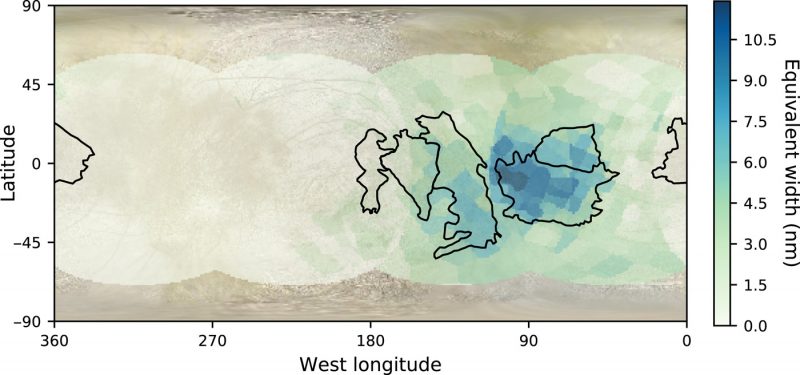
Europa’s subsurface ocean might be even more similar to Earth’s oceans than previously realized. NASA said on June 12, 2019, that a new study reveals evidence of sodium chloride – a major component of table salt and sea salt – on the icy surface of this large moon of Jupiter. If, as thought, the salt originates from Europa’s ocean, hidden beneath its icy crust, that would mean Europa’s ocean water is very similar to that in oceans on Earth. That, of course, would have obvious implications for the possibility of life on this fascinating little world.
The intriguing new peer-reviewed findings were published in the journal Science Advances on June 12, 2019.
The fact that sodium chloride is also a principal component of sea salt is particularly fascinating. Its discovery on Europa supports previous suggestions that this moon’s ocean is chemically very similar to Earth’s oceans.
Even though Europa’s ocean isn’t on its surface – but instead below its surface ice, surrounded by the icy shell of Europa’s crust – traces of minerals can be found on the little moon’s surface. The surface salt is thought to be due to upwelling through cracks and possibly geysers. Previous studies of the surface, including from NASA’s Voyager and Galileo spacecraft, had focused on infrared spectroscopy, since it is ideal for detecting the kinds of molecules that scientists are usually looking for. According to Mike Brown, an astronomer at Caltech:
People have traditionally assumed that all of the interesting spectroscopy is in the infrared on planetary surfaces, because that’s where most of the molecules that scientists are looking for have their fundamental features.

These types of chlorides can’t be seen with infrared spectroscopy, however, as Caltech student Samantha Trumbo explained:
No one has taken visible-wavelength spectra of Europa before that had this sort of spatial and spectral resolution. The Galileo spacecraft didn’t have a visible spectrometer. It just had a near-infrared spectrometer, and in the near-infrared, chlorides are featureless.
But when viewed in visible-wavelength spectroscopy, the sodium chloride signature popped out.
Previously, it was thought that magnesium sulfates had been found on the surface, but when additional higher quality observations were conducted with the W. M. Keck Observatory in Hawaii, there was no sign of them. The data pointed more towards sodium chlorides instead, and those don’t show up in infrared. As Brown also noted:
We thought that we might be seeing sodium chlorides, but they are essentially featureless in an infrared spectrum.


Proving that the salts were sodium chloride still required a bit more work, however. Samples of similar ocean salts were tested on Earth by Kevin Hand at JPL. He subjected them to similar radiation conditions found on Europa’s airless surface. He found that they changed colors in a manner very similar to what is actually seen on Europa itself. The sodium chloride turned a shade of yellow similar to that seen in a geologically young area of Europa known as Tara Regio. According to Hand:
Sodium chloride is a bit like invisible ink on Europa’s surface. Before irradiation you can’t tell it’s there, but after irradiation the color jumps right out at you.
The research team then studied Europa’s surface with the Hubble Space Telescope, and found a distinct absorption signature in the visible spectrum at 450 nanometers. This matched exactly the irradiated form of sodium chloride, confirming that the yellow color of Tara Regio showed the presence of the salt on the surface. So why wasn’t this found already? As Brown said:
We’ve had the capacity to do this analysis with the Hubble Space Telescope for the past 20 years. It’s just that nobody thought to look.
There’s still one caveat – the sodium chloride might be evidence of different types of materials stratified – formed in layers – in the moon’s icy shell, rather than originating from the ocean. The finding, however, is enough to warrant a reevaluation of the geochemistry of Europa as a whole. If indeed the sodium chloride does originate from the ocean, it would be evidence that the ocean floor is still hydrothermally active. According to Trumbo:
Magnesium sulfate would simply have leached into the ocean from rocks on the ocean floor, but sodium chloride may indicate the ocean floor is hydrothermally active. That would mean Europa is a more geologically interesting planetary body than previously believed.

If the ocean floor on Europa does have active hydrothermal vents like in Earth’s oceans, that would boost the chances for some kind of life to exist there. On Earth, such “hotspots” in the deep oceans are oases for living organisms.
Saturn’s ocean moon Enceladus is also now thought to have hydrothermal vents on its ocean bottom, based on data from NASA’s Cassini mission, which ended in late 2017. Scientists now know that Enceladus’ ocean contains salts and a variety of organic molecules, thanks to Cassini being able to fly through and directly sample some of the huge water vapor plumes that erupt from cracks in the moon’s icy surface and originate from the ocean deep below. Cassini couldn’t detect life itself, even if it was there, but future missions will search for that evidence at both Enceladus and Europa.
Bottom line: The discovery of sodium chloride salts on Europa provides compelling evidence that the moon’s subsurface ocean is very similar to Earth’s oceans, increasing the chances for life.











